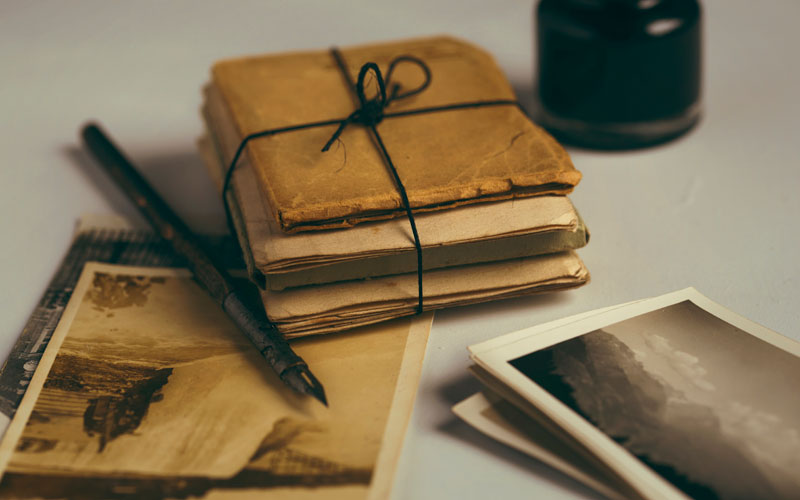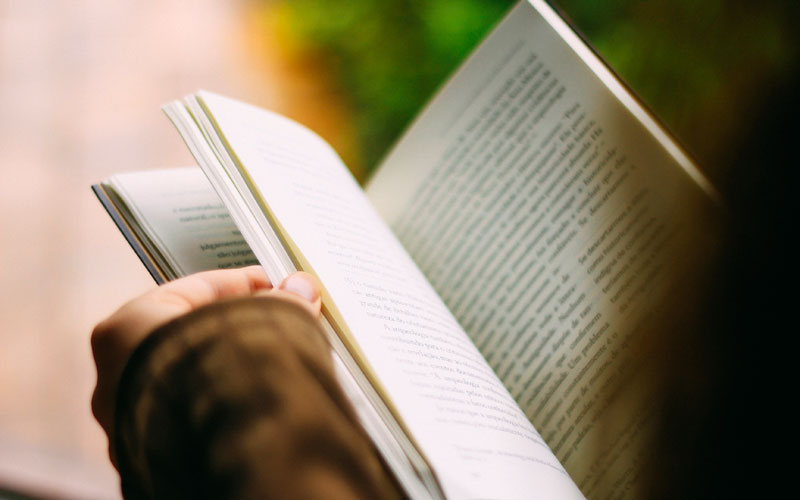First impressions are crucial to any reader’s decision. First impressions decide whether or not your readers want to be pulled into the world of your narrative. This makes the exposition of any novel or short story particularly important.
If your narrative borders on bland, clichéd and uninteresting, readers will soon lose interest. Indeed, it’s upon reading the initial page or two of your narrative that they’ll determine whether they want to close the book or carry on reading.
Therefore, it’s essential for you to develop a strong ‘hook’ — one that grips onto the reader so tightly, they simply can’t let go of your narrative upon reading the first paragraph, and second, and third.

Here are seven tips on how you can create a powerful ‘hook’ that’ll leave your readers with one thought and one thought only: I must keep on reading, I must find out more.
Points to Consider Before Writing the Hook
1. Know Your Audience
One of the key steps to take before you can effectively ‘hook’ your reader into your narrative is to determine who this reader is. In other words, who is the target audience for your novel or short story? In the early phases of planning and writing, this can be a particularly difficult question to answer.
The Advanced Fiction Writing website advises that you distinguish between your General Target Audience, those interested in your fiction or genre as a whole, and your Specific Target Audience, those interested in your narrative in particular.
The former is generally determined according to the genre and voice that interest your target readers, the latter according to demographic information including age, gender, income levels and political standpoints. That being said, sometimes your target audience could be as simple as ‘anyone who would like your book cover’.
Keep in mind that your book shouldn’t aim to appeal to everyone. Rather, write with one specific type of reader in mind. After all, only when you have a concrete picture of the reader in your head, are you able to better mould the style, context and composition of your narrative accordingly.
2. Know The Purpose of Your Narrative
What makes a narrative gripping are the profound or innovative messages it seeks to convey to the reader. Therefore, it’s helpful to incorporate an essence of your narrative’s message within the ‘hook’.
By doing this, you’re able to immediately immerse your readers into the core of your narrative, as well as encourage them to read on and to uncover the depths of the message you’re teasing them with.
However, to figure out your message, you must first figure out your purpose. This is crucial. Without a reason or motivation for writing your narrative, you end up in a perpetual state of purposelessness, because there is no point to what you’re writing.
So it’s essential that you ask yourself:
- What do I want the reader to take home from my novel or short story?
- Why am I writing this narrative?
- Do I want to convey some philosophical muse that the reader will find relevant or applicable to their own lives?
- Do I want to reveal to the reader something they may not have been aware of prior to reading my narrative?
For example, if you’re writing a romance novel, perhaps your purpose is to not only acknowledge the inevitability of heartbreak but also to show the process of growth and maturity one undergoes as they learn to accept, forgive and heal themselves. Invest time to explore why you’re writing in the first place.

Points to Consider while Writing the Hook
3. Adopt a strong character voice
Considerations of character voice are necessary to writing a good hook. Characters are one of the central components of narratives and they’re the ones the readers come to care about. A hook that introduces an interesting protagonist is necessary to compelling them to read on as they endeavour to find out more about the character, their world views and their responses to the situations within which they are placed.
The Now Novel website wisely says,
Character voice is not just the words that emerge from the character’s mouth. It is the point of view from which the character views the world.”
Think of the opening lines of J. D. Salinger’s Catcher in the Rye, for instance. The reason why we’re instantly drawn to the protagonist of Holden Caulfield is because of Holden’s voice. Salinger writes his hook with such brutal directness that the reader is able to gain access to Holden’s teenage angst and pessimistic attitude right from page one.
4. Use unusual imagery
Another feature of an effective hook is its ability to evoke imagery so strange or so beautiful to the tongue that it simply can’t escape the reader’s attention.
George Orwell’s novel 1984 is an excellent example of this. In one simple phrase in his exposition – ‘the clocks were striking thirteen’ – Orwell is able to instil within the reader that something is ‘not quite right’ about his setting.
As a result, a subtle yet nevertheless deeply unsettling sense of the unfamiliar pervades, disorienting the reader and pulling them into Orwell’s dystopian world.
Indeed, a description of a house being torn from its roots, of birds battering against the wind and of four fingers gripping to the edge of a table as it flies across the sky is far more interesting to read about than a statement declaring that a tornado is ripping up homes all across town.
Detail is crucial to alerting the reader to the small but significant cracks that your narrative is creating in an otherwise familiar, oft taken-for-granted setting.

5. Hide a piece of information
A hook that conceals specific pieces of information from the reader can work hand-in-hand with unusual imagery to create suspense and arouse curiosity. Writers Dennis Jerz and Kathy Kennedy give a great example to highlight this point. They compare two sentences that say essentially the same thing in different ways:
- ‘I heard my neighbour through the wall.’
- ‘The neighbour behind us practiced scream therapy in his shower almost every day.’
While the former sentence is dull and inspires no questions from the reader at all, the latter engages the reader by utilising the odd phrase ‘scream therapy’. This fact compels them to ask a number of other questions, such as:
- Who is this neighbour?
- Why does he practice scream therapy in his shower?
- What, precisely, is scream therapy?
One method of sparking curiosity within the reader is to avoid revealing all of the five W’s (who, what, when, where, why) and one H (how) in one go. This applies not only for the hook, but also for the rest of your narrative.
By hiding at least one piece of information from the reader at any one time, you invite them to ask questions and to keep reading onwards in anticipation (and expectation) of finding the answers they’re seeking.
6. Start in the middle of action
One of acclaimed author Kurt Vonnegut’s advice on writing short stories is, ‘Start as close to the end as possible.’ Why, you may ask?
Picture this scenario: Anna wakes up, has breakfast, receives a phone call from her friend asking her to come over and decides to bike ride to her friend’s house. However, on the way there, she encounters a cat stuck up a tree and decides to rescue this cat.
How boring would it be if the narrative began from the moment Anna woke up! What Vonnegut is advising us to do is to initiate the plot from the moment Anna finds the cat stuck up the tree, or better still, from the moment Anna finds herself stuck up the tree following her valiant attempt to rescue the cat.
Use action to engage the reader in your hook. Ensure that something is happening – something unexpected, something exciting, something moving, something that simulates a reaction from the reader. There are many different types of action you can incorporate into your narrative for the most effective scenes.

7. Present philosophical statements
The advantage of imparting some kind of refreshing philosophical muse in your hook is that you add the element of innovation to your narrative. In doing so, you also embed greater nuance into the meanings contained within your novel or short story.
Contradictions and paradoxes tend to have a philosophical undertone to them, so, when used astutely, they can connect with readers on both an intellectual and emotional level. Think along the lines of:
- ‘Only in the darkest nights are the brightest of lights able to reveal themselves.’
- ‘The normal would have at one point been the abnormal.’
Not only do contradictions and paradoxes inspire the reader to read between the lines and to examine the profundity of the statements remarked, but they also trigger a pensive state of self-reflection within the reader.
Philosophical statements may also take the form of irony. A famous example is the opening sentence of Jane Austen’s Pride and Prejudice:
It is a truth universally acknowledged, that a single man in possession of a good fortune, must be in want of a wife.”
Here, Austen presents a statement that is supposedly accepted as a universal ‘truth’, but she structures the statement in such a way that it becomes ridden with irony. By providing the reader with a train of thought, it positions the reader with the power to challenge this train of thought.
Readers are compelled to ask why a single man with a good fortune must be in want of a wife, even though the ‘fact’ declares it is ‘universally acknowledged’.
It’s therefore no surprise that such a statement has transcended time and space. These words are able to engage with the reader of any age or era by simultaneously stimulating their mind and stirring their heart.
Over to you
And this is what a hook should ultimately do: move the reader. It should create a space within which the reader is able to establish a genuine connection with the narrative.
On the one hand, it should be unusual, unexpected and unconventional, but on the other, it should consist of some point of relevance and familiarity.

So what are you waiting for? It’s time for you to write a stunning hook and to make an excellent first impression with the reader!
3 responses to “7 Clever Steps To Hook Your Reader Into Your Narrative”
‘Wise’, even! Thanks for mentioning Now Novel. Sound advice, I love the part about hiding information in your hook.
All the best,
B
Loved this. Thanks for great advice!
You’re very welcome, Vearna – glad to hear you enjoyed Katherine’s piece! 🙂